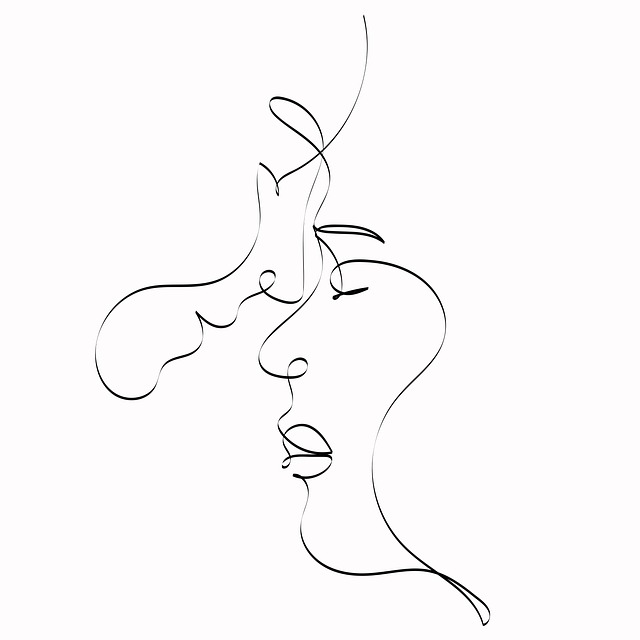Botox, derived from bacteria, is a leading non-surgical cosmetic enhancement solution, particularly effective for minimizing forehead lines and frown lines. By paralyzing specific muscles through injection, it blocks neuromuscular transmission, smoothing skin immediately and results that can last several months. With its safety profile and minimal downtime, Botox has become a popular choice for discreetly combating signs of aging. Long-term treatments require regular sessions (every 3-6 months) with an experienced practitioner to optimize results while minimizing side effects like muscle weakness or asymmetry. Proper dosage, advanced injection techniques, and follow-up care are crucial for achieving natural-looking results that soften lines and furrows over time.
“Uncover the transformative power of non-invasive botox treatments for long-term reduction of forehead lines and frown lines. This comprehensive guide delves into the science behind botox, its mechanism of action on dynamic wrinkles, and the safety considerations for prolonged use. Learn about effective dosage, injection techniques, potential side effects, and the importance of choosing an experienced clinician. Discover maintenance tips, real-life success stories, and patient testimonials, making informed decisions for enhanced facial aesthetics.”
Understanding Botox: A Brief Overview

Botox, a protein derived from bacteria, has gained immense popularity as a non-surgical solution for cosmetic enhancements, particularly focusing on reducing facial wrinkles. When injected into specific muscles, Botox temporarily paralyzes them, preventing contraction and thus minimizing the appearance of lines and wrinkles, especially those caused by frowning or squinting. This treatment is well-known for its effectiveness in treating forehead lines and frown lines, offering a long-lasting solution for many individuals seeking a youthful visage without surgery.
The mechanism of action makes Botox a highly targeted approach to cosmetic medicine. By blocking neuromuscular transmission at the junction between nerves and muscles, it smooths out skin, providing immediate results that can last for several months. This non-invasive procedure has become increasingly popular due to its safety profile and minimal downtime, making it an appealing option for those looking to combat signs of aging discreetly and effectively.
The Science Behind Botox for Forehead and Frown Lines

Botox, a protein derived from bacteria, has revolutionized non-invasive cosmetic treatments. Its mechanism of action involves blocking the release of acetylcholine, a neurotransmitter that signals muscle contraction. When injected into specific muscles, Botox relaxes them, effectively reducing the appearance of wrinkles. This is particularly notable for treating forehead lines and frown lines, which are often among the first signs of aging.
In the case of Botox for forehead and frown lines, the treatment targets the corrugator and procerus muscles, responsible for furrowing the brow and creating vertical creases between the eyebrows. By injecting small amounts of Botox into these areas, practitioners can smoothen out these lines, providing a more youthful appearance. This science-backed approach offers a long-term solution for individuals seeking to minimize these common signs of aging without surgery.
Long-Term Use: Benefits and Safety Considerations

Long-term use of non-invasive Botox treatments offers a number of benefits for those seeking to address forehead lines and frown lines. Over time, regular injections can help prevent or reduce the depth and appearance of these expressions marks. This not only provides a more youthful look but also boosts confidence in social settings.
However, as with any medical procedure, safety considerations are paramount. It’s crucial to choose an experienced, qualified practitioner for long-term Botox use. Regular sessions every 3-6 months can help maintain optimal results while minimising potential side effects like temporary muscle weakness or asymmetry. Proper communication between patient and practitioner is essential to ensure the best outcomes and mitigate any risks associated with extended Botox use for forehead and frown lines.
Effective Dosage and Injection Techniques

When considering long-term, non-invasive Botox treatment for forehead lines and frown lines, understanding the effective dosage and injection techniques is crucial. The ideal amount varies from person to person, depending on factors like skin thickness, muscle activity, and desired results. Typically, smaller, more precise injections are given to target specific problem areas without causing discomfort or side effects.
Skilled practitioners use advanced techniques to inject Botox into the relevant muscles, ensuring optimal results. This involves using fine needles to deliver the treatment directly into the muscle groups responsible for facial expressions. By doing so, Botox effectively relaxes these muscles, reducing the appearance of wrinkles over time. The key is balance – not eliminating all expression but softening lines and furrows, allowing for natural-looking relaxation.
Potential Side Effects and How to Manage Them

Botox treatments for forehead lines and frown lines have become increasingly popular as a non-invasive way to combat signs of aging. While Botox is generally considered safe, there are potential side effects to be aware of. The most common include temporary redness, swelling, or discomfort at the injection site. Some individuals may also experience headaches or mild muscle weakness in the treated areas. These side effects usually subside within a few days and can often be managed with over-the-counter pain relievers and cold compresses.
To minimize any adverse reactions, it’s essential to choose a qualified and experienced healthcare provider for your Botox injections. They can offer guidance on how to prepare for the treatment and what to expect post-procedure. Additionally, maintaining a healthy lifestyle, including staying hydrated and adopting a balanced diet, can help support your body’s recovery process and potentially reduce the severity of any temporary side effects.
Choosing the Right Clinician for Your Treatment

When considering long-term use of non-invasive Botox for forehead lines and frown lines, choosing the right clinician is paramount. It’s not enough to simply select a provider based on convenience or cost; expertise and experience matter significantly. Look for clinicians who specialize in aesthetic treatments, particularly focusing on Botox injections. Reputable professionals will have extensive training and certifications, demonstrating their proficiency in administering Botox safely and effectively.
Reputation and patient reviews are also valuable indicators. Research providers with a proven track record of success and positive feedback from previous patients. This ensures you’re in capable hands, minimizing risks and achieving the desired aesthetic results for your forehead and frown lines.
Maintenance and Follow-Up Care

When considering long-term use of non-invasive Botox, it’s crucial to understand maintenance and follow-up care. For those seeking to reduce the appearance of forehead lines and frown lines, regular treatments are often required to maintain the desired results. The interval between treatments can vary based on individual responses, but generally, every 3 to 6 months is typical. During these appointments, a qualified healthcare provider will assess the treatment area, ensuring no adverse reactions have occurred.
Proper follow-up care is essential after each Botox session. Patients should be aware of potential side effects like temporary bruising or headaches and are advised to rest, avoid strenuous activities, and remain hydrated in the days following treatment. Additionally, communicating any concerns or unusual symptoms with their healthcare provider promptly ensures optimal long-term outcomes for Botox treatments targeted at forehead and frown lines.
Real-Life Success Stories and Patient Testimonials

Many patients seeking non-invasive solutions for aging skin turn to Botox for forehead lines and frown lines, with promising results that speak for themselves. Real-life success stories abound, with individuals sharing their experiences of achieving a youthful appearance without surgery. Patient testimonials often highlight the convenience of the procedure—a quick in-office visit with minimal downtime—and the significant reduction in wrinkles, especially around the eyes and forehead.
These positive outcomes have encouraged many to consider long-term Botox treatments as an alternative to more invasive procedures. The ability to maintain a smooth, rejuvenated complexion over time has made Botox a popular choice for those looking to combat the signs of aging discreetly and effectively.
